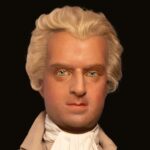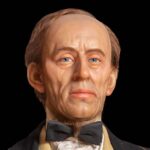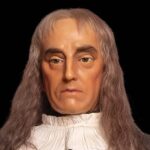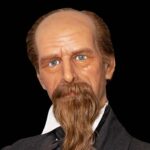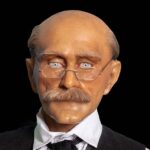A Biography of Ernest Hemingway
Ernest Hemingway was a critically acclaimed American writer known for his profound and straightforward writing style that revolutionized American literature. His early years were shaped by his love for the outdoors, as he spent his summers exploring northern Michigan. These experiences would later influence his works, where themes of adventure and the connection between humans and the natural world feature prominently. Hemingway’s life played out during a tumultuous time in history, and his experiences and writings reflected the tumultuous history of his time.
Hemingway’s personal experiences were a critical foundation of his works. His time as an ambulance driver during World War I influenced his views on life and death and inspired his novel A Farewell to Arms. His involvement in the Spanish Civil War as a correspondent enriched his understanding of the human condition, and the power of informed writing was influential for the novel For Whom the Bell Tolls. Hemingway’s literary career took flight in the 1920s when he was living in an expatriate community in Paris. Surrounded by writers and artists, this transformative time in life gave him a front-row seat to diverse and intellectual influences, which played a vital role in his writing.
DID YOU KNOW?
Hemingway's literary career took flight in the 1920s when he was living in an expatriate community in Paris.
Ernest Hemingway’s legacy as a writer is an inspiration to past, present and future generations. Hemingway’s history is a crucial part of the literary world, as his personal experiences heavily influenced his work. His narratives are trademarked by the direct and emotional impact that resonates deeply with readers. He was known for his matter-of-fact use of words, which omitted details, encouraging readers to infer and actively engage with his narratives. This approach, often referred to as the “Hemingway style,” became his trademark and revolutionized the art of storytelling. Ernest Hemingway’s biography showcases the life and work of a literary giant whose impact on American literature and culture is immeasurable.
10 Unknown Facts About Ernest Hemingway
Ernest Hemingway served in World War I and was honored with the Italian Silver Medal of Valor and a Bronze Star for his bravery and heroism.
Throughout his life, Hemingway was noted for courage, and his works reflected his own experience of war. He was accused and later cleared of war crimes during his time as an ambulance driver during World War I.
Gertrude Stein acted as godmother to Ernest Hemingway’s son, Jack.
The famed American novelist and Nobel Prize winner is believed to have been a spy for the Soviet intelligence agency. According to reports, Hemingway was asked to report on any political developments he observed during his travels, although it’s unclear how successful he was in this role.
Ernest Hemingway’s remarkable literary masterpiece emerged as a result of his accidental abandonment of personal belongings at the esteemed Ritz Hotel in Paris.
It is highly probable that the well-known narrative surrounding the “Baby Shoes” story is fictitious.
Ernest Hemingway narrowly escaped death in consecutive airplane accidents.
Each of Ernest Hemingway’s four spouses received the heartfelt dedication of a book from the esteemed author.
The Key West residence of Ernest Hemingway boasts a urinal that was obtained from his beloved local bar.
Ernest Hemingway was an avid fisherman and hunter.
Early Life of Ernest Hemingway
On July 21, 1899, in a suburb of Chicago, Ernest Hemingway was born into a home of well-educated and cultured individuals who valued the arts and literature. Ernest was the second child of Clarence and Grace Hall Hemingway. Clarence was a physician and Grace was a music teacher. In addition to being raised in a home supportive of the arts, Hemingway also developed a passion for the outdoors and all that nature has to enjoy. Ernest Hemingway’s early summers were spent in northern Michigan where he could explore his interests in fishing, hunting and camping. These childhood experiences not only influenced his career but also became integral to his writing.
Ernest Hemingway began perfecting his writing talent from an early age. In his teen years at Oak Park and River Forest High School, Hemingway excelled in English and journalism. In fact, Hemingway’s talent is documented in his high school newspaper and magazines. Staying true to his passions, Ernest Hemingway was also on the football team and competed in track and field. Hemingway graduated in 1917 and briefly worked at The Kansas City Star as a reporter. It was in this role that he began developing his infamous writing style using a technique called the “iceberg” theory.
DID YOU KNOW?
Ernest Hemingway was on the football team and competed in track and field.
After his brief role at The Kansas City Star, Hemingway enlisted in the Red Cross. In 1918, Hemingway served as an ambulance driver in Italy for the Red Cross during World War I. Wounded in action, he spent several months recovering at a hospital in Milan. Hemingway’s third novel A Farewell to Arms was inspired by his time on the battlefield in Italy, as it left an abstruse mark on his life and writing. After recovering from his battle injuries, Hemingway returned home to Chicago. Back to the world of literature and journalism, Ernest Hemingway picked up a job as a journalist and began writing his first fictional story. Published in 1925, “The Big Two-Hearted River” is a two-part fictional tale that is the first to showcase Hemingway’s appreciation for the outdoors.
Later that year, Ernest Hemingway moved to Paris and joined a community of expatriates, where he met F. Scott Fitzgerald who soon became his friend, confidant and mentor. The community of expatriates was made up of writers and artists who were living there at the time. While he was in Paris, Hemingway wrote some of his most famous works, including The Sun Also Rises and A Moveable Feast. Overall, Ernest Hemingway’s early life was marked by a love of nature, a passion for writing and a sense of adventure. These experiences would shape his writing and make him one of the most important American writers of the 20th century.
Ernest Hemingway’s Nobel Prize in Literature
One of the most prestigious awards in the literary world is the Nobel Prize in Literature. Since its inception in 1901, one author has been awarded this honor for contributing phenomenal publications in the realm of literature each calendar year. In 1945, Ernest Hemingway was awarded this esteemed accolade for his enduring contributions to literature and the significance his work has had on the world. The Nobel Prize for Literature not only recognized Hemingway’s individual accomplishments but also celebrated his profound influence on subsequent generations of writers.
Ernest Hemingway revolutionized modern storytelling with his innate ability to capture the human experience both in authenticity and depth. Leaving an indelible mark in the literary domain, Hemingway’s unique style, deemed “Hemingway style,” captivates and interacts with readers using his minimalistic and profound expression. His use of precise, vivid descriptions thread through his narrative helping to place readers in the story’s atmosphere. In his narratives, Hemingway used the “iceberg” theory to keep his readers engaged. By providing the details needed to set the scene, and leaving room to read between the lines, this unique approach allows readers to actively engage with the text, encouraging them to fill in the gaps and interpret the underlying emotions and meaning. His trademark themes are love, loss and vulnerability, all found in war, significance and human connection. Much of Hemingway’s inspiration came from his own experiences with travel and war and can be found in some of his most renowned classics: A Farewell to Arms, The Sun Also Rises, and For Whom the Bell Tolls.
The Nobel Prize’s bestowal to Ernest Hemingway is a testament to his legacy and his influence in shaping storytelling as we know it today. As a revolutionary of modern prose and one of the most iconic authors of the 20th century, Hemingway’s works will continue to be celebrated and studied for generations to come.
DID YOU KNOW?
Hemingway's unique style is deemed "Hemingway style."
The Top 11 Ernest Hemingway Books
The Torrents of Spring (1926)
The Sun Also Rises (1926)
A Farewell to Arms (1929)
Winner Take Nothing (1933)
To Have and Have Not (1937)
For Whom the Bell Tolls (1940)
Across the River and Into the Trees (1950)
The Old Man and the Sea (1952)
A Moveable Feast (1964)
Islands in the Stream (1970)
The Dangerous Summer (1985)
Ernest Hemingway's Main Accomplishments
Ernest Hemingway began perfecting his writing talent from an early age.
Hemingway’s talent is documented as early as his teen years when he began making appearances in his high school newspaper, where he shared his passion for storytelling. Later working as a journalist for newspapers, Hemingway gained incalculable experience that curated his writing style — concise and impactful.
In recognition of his courageous actions in World War I, Ernest Hemingway was awarded the Italian Silver Medal of Bravery (Medaglia d’Argento al Valor Militare).
This honor is bestowed on individuals who display exceptional acts of valor or heroism on the battlefield. Hemingway earned this prestigious military decoration by braving perilous conditions on the front lines to rescue wounded soldiers when he served as an ambulance driver for the American Red Cross in Italy.
Hemingway’s novel “The Sun Also Rises” played a critical part in establishing his writing career.
This piece was noted as a groundbreaking novel in the Modernist movement when it was published in 1926 and marked Hemingway’s distinct writing style in American literature. Key features of The Sun Also Rises are its thematic explorations and the narrative style Hemingway used to convey the emotions and human complexities of expatriates seeking meaning and purpose post-World War I, in a world of cultural disruption.
In 1929, “A Farewell to Arms” was published, cementing Ernest Hemingway’s reputation as the literary icon of the 20th century.
Staying true to the author, this novel contains a passionate narrative with original characterizations and an uncompromising look into the human spirit. A common theme in Hemingway’s novels is characters facing adversity and learning to live in a state of emptiness and fragility. With his minimal approach of short powerful sentences, Hemingway engages with his readers on an emotional level.
In the late 1930s, Ernest Hemingway provided journalistic support to cover the Spanish Civil War.
Through this opportunity, Hemingway showcased his dedication to unveiling the truth of significant world events and demonstrated steadfast journalistic integrity. Placing himself among the Republican forces, and stepping up to the front line to serve as a soldier at times, assisted Hemingway’s ability to capture the brutality, raw emotions and sacrifices of war. Covering the Spanish Civil War further shaped Hemingway’s perspectives on war and politics, and influenced his novel For Whom the Bell Tolls. By immersing himself in the devastating conflict, Hemingway was able to communicate the impact that turmoil has on communities and humanity.
Ernest Hemingway’s critically acclaimed novel “For Whom the Bell Tolls,” published in 1940, is one of many testaments to Hemingway’s ability to connect with readers through powerful and emotional narratives.
Hemingway’s trademark writing style is concise and reminiscent while exploring themes of war, love, sacrifice, and the value and complexities of human life. Inspired by his time as a journalist in the Spanish Civil War, Ernest Hemingway continued to use his expertise of vivid and intense storytelling to capture readers and place them into a moment in time. For Whom the Bell Tolls earned Ernest Hemingway the Pulitzer Prize for Fiction in 1941 and the Nobel Prize in Literature in 1954, further justifying his status as one of the greatest figures in American literature.
One of the most prestigious awards in the literary realm is the Nobel Prize for Literature.
Hemingway earned this esteemed accolade for his innate ability to capture the human experience both in authenticity and depth. Ernest Hemingway is known for his minimalist writing which is now known as “Hemingway style.” The Hemingway style of writing is to develop a responsive piece with concise and profound language. Hemingway used the “iceberg” method to provide the crucial details allowing readers to become involved in the story with the freedom to construe meanings in his works of love, loss and vulnerability.
The renowned Hemingway style of writing follows a method that leaves room for readers to engage in the text to further immerse themselves in the narrative and draw their own conclusions.
This method is called the “iceberg” theory or the theory of omission. Ernest Hemingway is known for his concise and intense composition, which is the tip of the iceberg. The bottom of the iceberg, the part of the glacial mass that isn’t seen, is where Hemingway allows readers to actively participate in the full construction of his narrative. This provides a deeper connection between author and reader, which is what makes his works profound and indelible.
The Story of Ernest
Hemingway’s Death
Ernest Hemingway died at the age of 61 on July 21, 1961, at his home in Ketchum, Idaho. His untimely demise caused a great deal of speculation at the time, but now his tragic story sheds light on the struggles he faced in his later years. Hemingway had a history of mental health issues and chronic pain from lingering injuries, and he struggled with depression and alcoholism throughout his life. In addition to the daily challenges he faced, he also lived with trauma due to his service in World War I, documenting the Spanish Civil War and surviving two back-to-back plane crashes in his lifetime. In the months prior to his death, Ernest Hemingway was admitted to the hospital as his mental and physical state severely deteriorated. He endured psychiatric treatment, including electroconvulsive therapy (ECT), to relieve his depression. The ECT caused memory and creativity lapses, but he was committed to continuing his work and remaining independent.
Hemingway struggled with depression and alcoholism throughout his life
Hemingway’s lifelong battle with depression, his declining health and his difficulty writing caused a lot of frustration and grievance for him. Hemingway took his own life with a gunshot wound to his head. His premature and tragic death shocked the literary world, leaving a void in America’s literary domain. Hemingway’s friends and colleagues were devastated when the news of this tragedy spread. Ernest Hemingway inspired thousands to create impactful narratives of their own.
Hemingway’s death was deeply complex and intimate. No one can say what led him to this decision, but his lifelong struggles with depression and alcoholism may have been of influence. Although his eventual suicide is part of his life story, it is imperative to remember Hemingway not only for his premature death but for his significant contributions to American literature and his permanent legacy as one of the most influential writers of the 20th century.
Since his death, there has been continued admiration and recognition of Hemingway’s life and legacy through the written word, museums and more. Ernest Hemingway’s impact on American literature is unmatched. He is notorious for his writing style, “Hemingway style,” which is recognized by his minimalistic and profound narrative. Hemingway’s work is a significant part of the literary world and continues to be studied and celebrated. Ernest Hemingway’s novels are time-honored literary classics that earned him Pulitzer and Nobel prizes for his innate ability to capture the human connection.
FAQs
Why did Hemingway kill himself?
Ernest Hemingway endured personal struggles with depression and declining health and faced many challenges in his relationships and writing career.
What characterizes Hemingway’s writing style?
Ernest Hemingway’s writing style is characterized by several distinct elements. He was known for his concise and straightforward prose, using a minimalist approach focusing on capturing the aspect of a scene or a character with succinctness. Hemingway favored short, firm sentences using simple vocabulary, avoiding elaborate descriptions and unnecessary adjectives. His style emphasized directness, allowing readers to interpret details through subtext. Hemingway also incorporated elements of realism and naturalism in his writing, which drew upon inspiration from his own experiences as a journalist, soldier and adventurer. His works often featured themes of masculinity, war, love and the human condition, emphasizing reflection and existential dilemma. Overall, Hemingway’s identifiable writing style has influenced generations of writers.
What is Hemingway’s theory of omission or “iceberg principle?”
Ernest Hemingway’s theory of omission is also referred to as the “iceberg” principle or theory of omission. This writing technique deliberately leaves out certain details to allow the reader to interpret the underlying significance. This theory is much like an iceberg, where only a small portion is visible above water, while the majority remains hidden beneath.
Can you tell me more about the friendship between Hemingway and Fitzgerald?
Hemingway and Fitzgerald first met in the early 1920s in Paris, where they were part of a vibrant expatriate community of writers and artists. They formed a bond based on mutual admiration and shared experiences. Hemingway saw Fitzgerald as a mentor figure and looked up to him for his early success as the author of The Great Gatsby.

